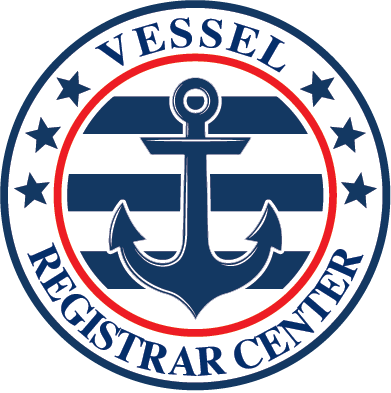General
183.501 Applicability.
- This subpart applies to all boats that have gasoline engines, except outboard engines, for electrical generation, mechanical power, or propulsion.
- [Reserved]
[CGD 74-209, 42 FR 5950, Jan. 31, 1977, as amended by CGD 81-092, 48 FR 55736, Dec. 15, 1983; USCG-1999-5832, 64 FR 34716, June 29, 1999]
183.505 Definitions.
As used in this subpart:
Flame arrestor means a device or assembly that prevents passage of flame through a fuel vent.
Fuel system means the entire assembly of the fuel fill, vent, tank, and distribution components, including pumps, valves, strainers, carburetors, and filters.
Static floating position means the attitude in which a boat floats in calm water, with each fuel tank filled to its rated capacity, but with no person or item of portable equipment on board.
[CGD 74-209, 42 FR 5950, Jan. 31, 1977, as amended by CGD 85-098, 52 FR 19728, May 27, 1987]
183.507 General.
Each fuel system component on a boat to which this subpart applies must meet the requirements of this subpart unless the component is part of an outboard engine or is part of portable equipment.
Equipment Standards
183.510 Fuel tanks.
- Each fuel tank in a boat must have been tested by its manufacturer under § 183.580 and not leak when subjected to the pressure marked on the tank label under § 183.514(b)(5).
- Each fuel tank must not leak if subjected to the fire test under § 183.590. Leakage is determined by the static pressure test under § 183.580, except that the test pressure must be at least one-fourth PSIG.
- Each fuel tank of less than 25 gallons capacity must not leak if tested under § 183.584.
- Each fuel tank with a capacity of 25 to 199 gallons must not leak if tested under § 183.586.
- Each fuel tank of 200 gallons capacity or more must not leak if tested under §§ 183.586 and 183.588.
[CGD 74-209, 42 FR 5950, Jan. 31, 1977, as amended by CGD 81-092, 48 FR 55736, Dec. 15, 1983]
183.512 Fuel tanks: Prohibited materials.
- A fuel tank must not be constructed from terneplate.
- Unless it has an inorganic sacrificial galvanic coating on the inside and outside of the tank, a fuel tank must not be constructed from black iron or carbon steel.
- A fuel tank encased in cellular plastic or in fiber reinforced plastic must not be constructed from a ferrous alloy.
[CGD 74-209, 42 FR 5950, Jan. 31, 1977; 42 FR 24739, May 16, 1977]
183.514 Fuel tanks: Labels.
- Each fuel tank must have a label that meets the requirements of paragraphs (b) through (d) of this section.
- Each label required by paragraph (a) of this section must contain the following information:
- Fuel tank manufacturer’s name (or logo) and address.
- Month (or lot number) and year of manufacture.
- Capacity in U.S. gallons.
- Material of construction.
- The pressure the tank is designed to withstand without leaking.
- Model number, if applicable.
- The statement, “This tank has been tested under 33 CFR 183.510(a).”
- If the tank is tested under § 183.584 at less than 25g vertical accelerations the statement, “Must be installed aft of the boat’s half length.”
- Each letter and each number on a label must:
- Be at least 1/16 inch high and
- Contrast with the basic color of the label or be embossed on the label.
- Each label must:
- Withstand the combined effects of exposure to water, oil, salt spray, direct sunlight, heat, cold, and wear expected in normal operation of the boat, without loss of legibility; and
- Resist efforts to remove or alter the information on the label without leaving some obvious sign of such efforts.
[CGD 74-209, 42 FR 5950, Jan. 31, 1977, as amended by CGD 81-092, 48 FR 55737, Dec. 15, 1983; USCG-1999-5832, 64 FR 34716, June 29, 1999]
183.516 Cellular plastic used to encase fuel tanks.
- Cellular plastic used to encase metallic fuel tanks must:
- Not change volume by more than five percent or dissolve after being immersed in any of the following liquids for 24 hours at 29 °C:
- Reference fuel B ASTM D 471 (incorporated by reference, see § 183.5).
- No. 2 reference oil of ASTM D 471 (incorporated by reference, see § 183.5).
- Five percent solution of trisodium phosphate in water; and
- Not absorb more than 0.12 pound of water per square foot of cut surface, measure under Military Specification MIL P-21929B.
- Not change volume by more than five percent or dissolve after being immersed in any of the following liquids for 24 hours at 29 °C:
- Non-polyurethane cellular plastic used to encase metallic fuel tanks must have a compressive strength of at least 60 pounds per square inch at ten percent deflection measured under ASTM D 1621 (incorporated by reference, see § 183.5), “Compressive Strength of Rigid Cellular Plastics”.
- Polyurethane cellular plastic used to encase metallic fuel tanks must have a density of at least 2.0 pounds per cubic foot, measured under ASTM D 1622 (incorporated by reference, see § 183.5), “Apparent Density of Rigid Cellular Plastics.”
[CGD 74-209, 42 FR 5950, Jan. 31, 1977, as amended by CGD 77-98, 42 FR 36253, July 14, 1977; CGD 81-092, 48 FR 55737, Dec. 15, 1983; USCG-2000-7223, 65 FR 40059, June 29, 2000]
183.518 Fuel tank openings.
Each opening into the fuel tank must be at or above the topmost surface of the tank.
183.520 Fuel tank vent systems.
- Each fuel tank must have a vent system that prevents pressure in the tank from exceeding 80 percent of the pressure marked on the tank label under § 183.514(b)(5).
- Each vent must:
- Have a flame arrester that can be cleaned unless the vent is itself a flame arrestor; and
- Not allow a fuel overflow at the rate of up to two gallons per minute to enter the boat.
[CGD 74-209, 42 FR 5950, Jan. 31, 1977, as amended by CGD 77-98, 42 FR 36253, July 14, 1977]
183.524 Fuel pumps.
- Each diaphragm pump must not leak fuel from the pump if the primary diaphragm fails.
- Each electrically operated fuel pump must not operate except when the engine is operating or when the engine is started.
- If tested under § 183.590, each fuel pump, as installed in the boat, must not leak more than five ounces of fuel in 2 1/2 minutes, inclusive of leaks from fuel line, fuel filter and strainer.
[CGD 74-209, 42 FR 5950, Jan. 31, 1977, as amended by CGD 77-98, 42 FR 36253, July 14, 1977]
183.526 Carburetors.
- [Reserved]
- Each carburetor must not leak more than five cubic centimeters of fuel in 30 seconds when:
- The float valve is open;
- The carburetor is at half throttle; and
- The engine is cranked without starting; or
- The fuel pump is delivering the maximum pressure specified by its manufacturer.
- Each updraft and horizontal draft carburetor must have a device that:
- Collects and holds fuel that flows out of the carburetor venturi section toward the air intake;
- Prevents collected fuel from being carried out of the carburetor assembly by the shock wave of a backfire or by reverse air flow; and
- Returns collected fuel to the engine induction system after the engine starts,
[CGD 74-209, 42 FR 5950, Jan. 31, 1977, as amended by CGD 77-98, 42 FR 36253, July 14, 1977]
183.528 Fuel stop valves.
- Each electrically operated fuel stop valve in a fuel line between the fuel tank and the engine must:
- Open electrically only when the ignition switch is on; and
- Operate manually.
- If tested in accordance with the fire test under § 183.590, a fuel stop valve installed in a fuel line system requiring metallic fuel lines or “USCG Type A1” hose must not leak fuel.
[CGD 74-209, 42 FR 5950, Jan. 31, 1977, as amended by CGD 85-098, 52 FR 19728, May 27, 1987]
183.530 Spud, pipe, and hose fitting configuration.
Except when used for a tank fill line, each spud, pipe, or hose fitting used with hose clamps must have:
- A bead;
- A flare; or
- A series of annular grooves or serrations no less than 0.015 inches deep, except a continuous helical thread, knurl, or groove.
[CGD 74-209, 42 FR 5950, Jan. 31, 1977, as amended by USCG-1999-5832, 64 FR 34716, June 29, 1999]
183.532 Clips, straps, and hose clamps.
- Each clip, strap, and hose clamp must:
- Be made from a corrosion resistant material; and
- Not cut or abrade the fuel line.
- If tested in accordance with the fire test under § 183.590, a hose clamp installed on a fuel line system requiring metallic fuel lines or “USCG Type A1” hose must not separate under a one pound tensile force.
[CGD 74-209, 42 FR 5950, Jan. 31, 1977, as amended by CGD 85-098, 52 FR 19728, May 27, 1987]
183.534 Fuel filters and strainers.
If tested under § 183.590, each fuel filter and strainer, as installed in the boat, must not leak more than five ounces of fuel in 2 1/2 minutes inclusive of leaks from the fuel pump and fuel line.
[CGD 77-98, 42 FR 36253, July 14, 1977]
183.536 Seals and gaskets in fuel filters and strainers.
- [Reserved]
- Each gasket and each sealed joint in a fuel filter and strainer must not leak when subjected for 24 hours to a gasoline that has at least a 50 percent aromatic content at the test pressure marked on the fuel tank label.
[CGD 81-092, 48 FR 55737, Dec. 15, 1983]
183.538 Metallic fuel line materials.
Each metallic fuel line connecting the fuel tank with the fuel inlet connection on the engine must:
- Be made of seamless annealed copper, nickel copper, or copper-nickel; and
- Except for corrugated flexible fuel line, have a minimum wall thickness of 0.029 inches.
183.540 Hoses: Standards and markings.
- “USCG Type A1” hose means hose that meets the performance requirements of:
- SAE Standard J1527DEC85, Class 1 and the fire test in § 183.590; or
- Underwriters’ Laboratories, Inc. (UL) Standard 1114.
- “USCG Type A2” hose means hose that meets the performance requirements of SAE Standard J1527DEC85, Class 2 and the fire test in § 183.590;
- “USCG Type B1” hose means hose that meets the performance requirements of SAE Standard J1527DEC85, Class 1.
- “USCG Type B2” hose means hose that meets the performance requirements of SAE Standard J1527DEC85, Class 2.
Note:
SAE Class 1 hose has a permeation rating of 100 grams or less fuel loss per square meter of interior surface in 24 hours. SAE Class 2 hose has a permeation rating of 300 grams or less fuel loss per square meter of interior surface in 24 hours.
- Each “USCG Type A1,” “USCG Type A2,” “USCG Type B1,” and “USCG Type B2” hose must be identified by the manufacturer by a marking on the hose.
- Each marking must contain the following information in English:
- The statement “USCG TYPE (insert A1 or A2 or B1 or B2).”
- The year in which the hose was manufactured.
- The manufacturer’s name or registered trademark.
- Each character must be block capital letters and numerals that are at least one eighth-inch high.
- Each marking must be permanent, legible, and on the outside of the hose at intervals of 12 inches or less.
[CGD 85-098, 52 FR 19728, May 27, 1987]
183.542 Fuel systems.
- Each fuel system in a boat must have been tested by the boat manufacturer and not leak when subjected to the greater of the following pressures:
- Three pounds per square inch; or
- One and one-half times the pressure created in the lowest part of the fuel system when it is filled to the level of overflow with fuel.
- The test pressure shall be obtained with air or inert gas.
[CGD 81-092, 48 FR 55737, Dec. 15, 1983]
Texts
183.580 Static pressure test for fuel tanks.
A fuel tank is tested by performing the following procedures in the following order:
- Fill the tank with air or inert gas to the pressure marked on the tank label under § 183.514(b)(5).
- Examine each tank fitting and seam for leaks using a leak detection method other than the pressure drop method.
[CGD 74-209, 42 FR 5950, Jan. 31, 1977, as amended by CGD 81-092, 48 FR 55737, Dec. 15, 1983]
183.584 Shock test.
A fuel tank is tested by performing the following procedures in the following order:
- Perform the static pressure test under § 183.580.
- If the tank is non-metallic, fill it to capacity with a gasoline that has at least a 50 percent aromatic content. Keep the fuel in the tank at 21 °C or higher for 30 days prior to testing.
- Mount the tank to the platform of an impact test machine.
- Fill the tank to capacity with water.
- Apply one of the following accelerations within three inches of the center of the horizontal mounting surface of the tank. The duration of each vertical acceleration pulse is measured at the base of the shock envelope.
- If the tank is not labeled under § 183.514(b)(8) for installation aft of the half length of the boat, apply 1000 cycles of 25g vertical accelerations at a rate of 80 cycles or less per minute. The duration of the acceleration pulse must be between 6 and 14 milliseconds.
- If the tank is manufactured for installation with its center of gravity aft of the half length of the boat, apply 1000 cycles of 15g vertical accelerations at a rate of 80 cycles or less per minute. The duration of the shock pulse must be between 6 and 14 milliseconds.
- Perform the static pressure test under § 183.580.
[CGD 74-209, 42 FR 5950, Jan. 31, 1977, as amended by USCG-1999-5832, 64 FR 34716, June 29, 1999]
183.586 Pressure impulse test.
A fuel tank is tested by performing the following procedures in the following order:
- Perform the static pressure test under § 183.580.
- If the tank is non-metallic, fill it to capacity with a gasoline that has at least a 50 percent aromatic content. Keep the fuel in the tank at 21 °C or higher for 30 days prior to testing.
- Mount the tank on a test platform.
- Fill the tank to capacity with water.
- Cap and seal each opening in the tank.
- Apply 25,000 cycles of pressure impulse at the rate of no more than 15 impulses per minute varying from zero to three PSIG to zero inside the tank top from a regulated source of air, inert gas, or water.
- Perform the static pressure test under § 183.580.
183.588 Slosh test.
A fuel tank is tested by performing the following procedures in the following order:
- Perform the static pressure test under § 183.580.
- Perform the pressure impulse test under § 183.586.
- Secure the tank to the platform of a tank rocker assembly.
- Fill the tank to one-half capacity with water.
- Cap and seal each opening in the tank.
- Apply 500,000 cycles or rocking motion 15 degrees to each side of the tank centerline at the rate of 15 to 20 cycles a minute. The axis of rotation of the rocker and fuel tank must be perpendicular to the centerline of the tank length at a level six inches or less above or below the tank’s bottom.
- Perform the static pressure test under § 183.580.
[CGD 74-209, 42 FR 5950, Jan. 31, 1977, as amended by USCG-1999-5832, 64 FR 34716, June 29, 1999]
183.590 Fire test.
- A piece of equipment is tested under the following conditions and procedures:
- Fuel stop valves, “USCG Type A1” or USCG Type A2” hoses and hose clamps are tested in a fire chamber.
- Fuel filters, strainers, and pumps are tested in a fire chamber or as installed on the engine in the boat.
- Fuel tanks must be tested filled with fuel to one-fourth the capacity marked on the tank in a fire chamber or in an actual or simulated hull section.
- Each fire test is conducted with free burning heptane and the component must be subjected to a flame for 2 1/2 minutes.
- If the component is tested in a fire chamber:
- The temperature within one inch of the component must be at least 648 °C sometime during the 2 1/2 minute test;
- The surface of the heptane must be 8 to 10 inches below the component being tested; and
- The heptane must be in a container that is large enough to permit the perimeter of the top surface of the heptane to extend beyond the vertical projection of the perimeter of the component being tested.
- If the component is being tested as installed on an engine, heptane sufficient to burn 2 1/2 minutes must be poured over the component and allowed to run into a flat bottomed pan under the engine. The pan must be large enough to permit the perimeter of the top surface of the heptane to extend beyond the vertical projection of the perimeter of the engine.
- If a fuel tank is being tested in an actual or simulated hull section, the actual or simulated hull section must be of sufficient size to contain enough heptane to burn for 2 1/2 minutes in a place adjacent to the tank.
[CGD 74-209, 42 FR 5950, Jan. 31, 1977, as amended by CGD 77-98, 42 FR 36253, July 14, 1977; CGD 85-098, 52 FR 19729, May 27, 1987]




